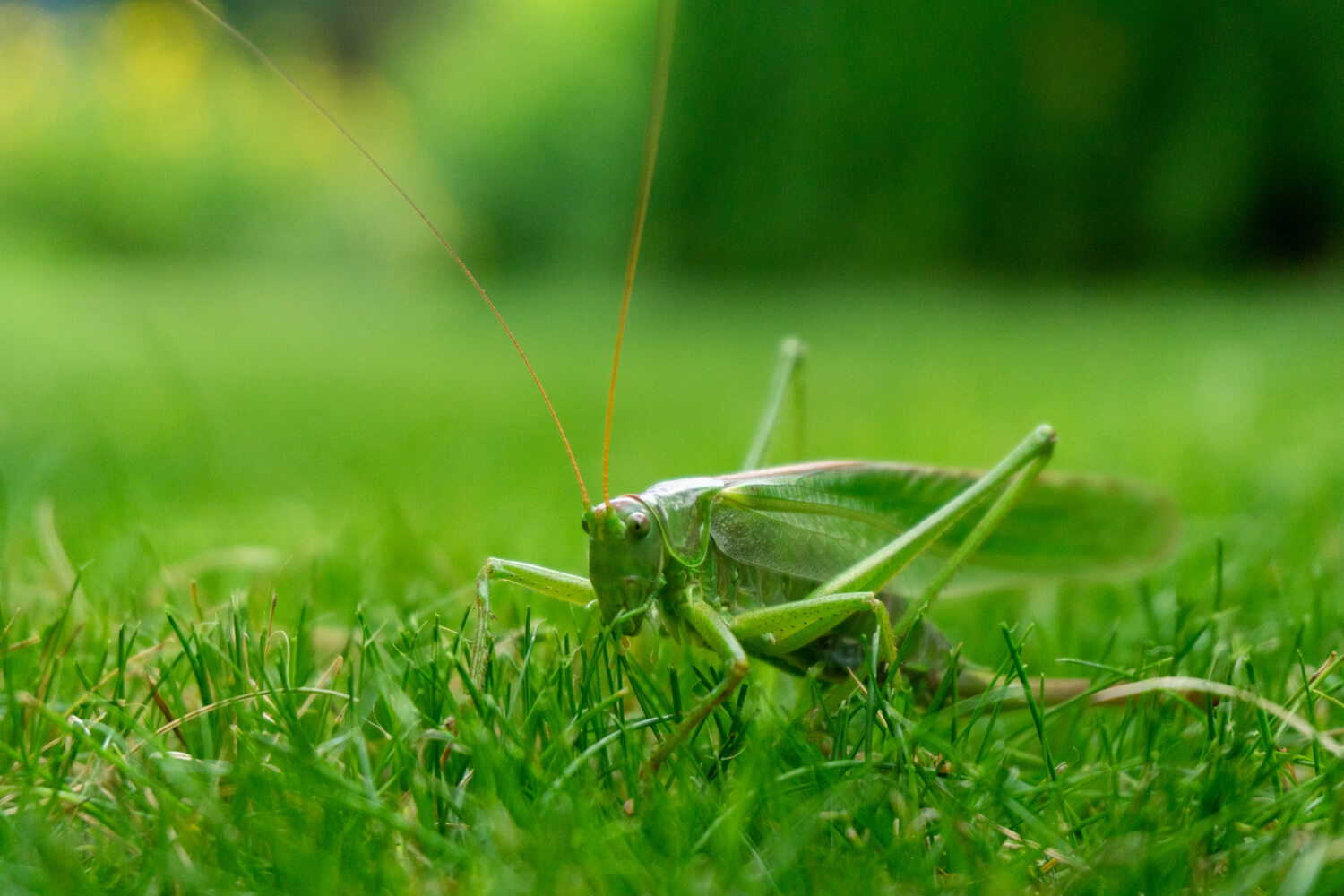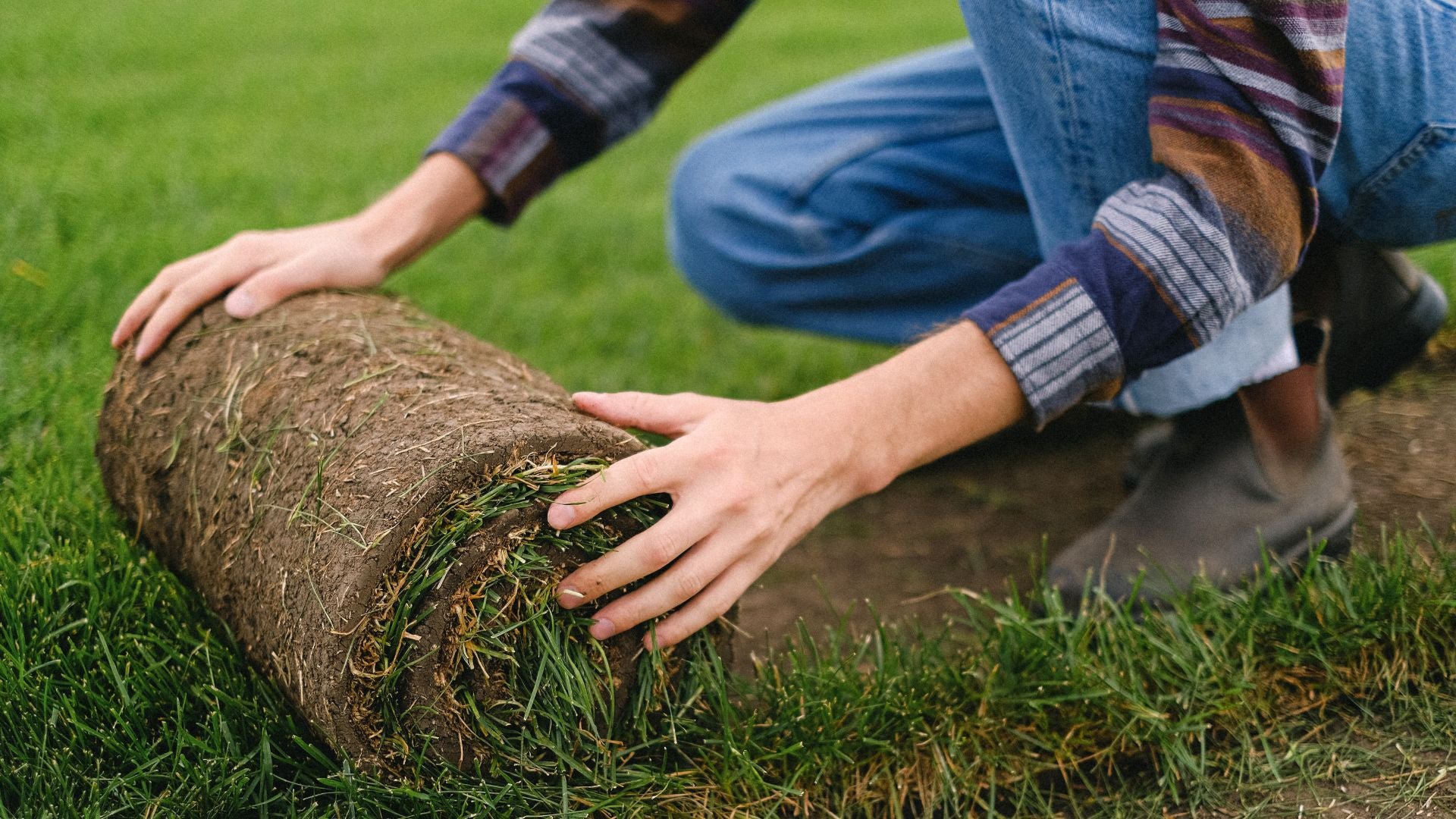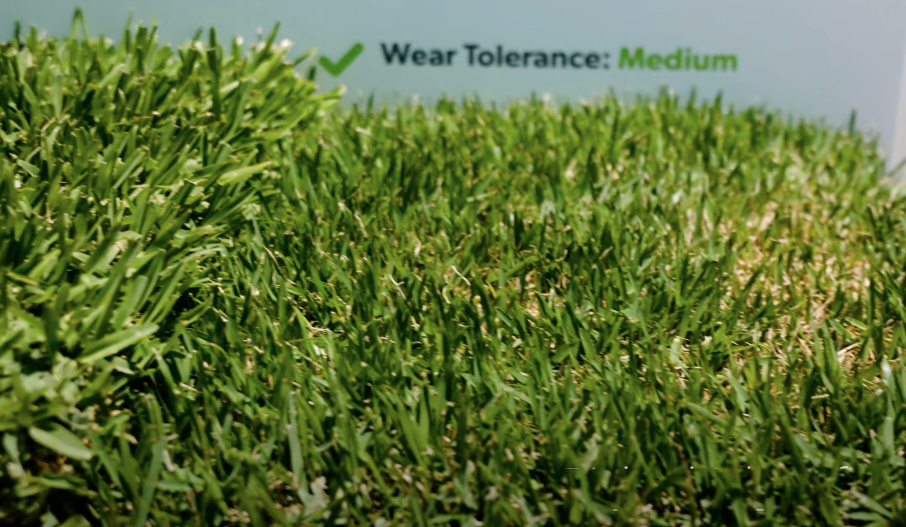Anyone who has spent time and money laying turf understands the anxiety a sudden yellow or brown patch can bring with it. When the damage is caused by insects, your immediate response is to kill them all, but what if you kill the beneficial ones?
It is time to get to know some of your more common lawn insects and how to identify these little ninjas. We are going to introduce you to some chemical and non-chemical options to help manage grass-eating insects and how to apply them safely.
Whether you're an expert or a beginner, the following insect management guide for turf grass is perfect for anyone who wants to keep their lawn healthy and beautiful without doing too much damage to the fragile ecosystem in their garden.
Identifying common lawn insects and natural ways to eliminate them
Let's talk about the most common lawn insects you are likely to come across while maintaining your turf grass.
Ants

Generally, ants don't cause direct damage to your grass, but they can create unsightly mounds and disrupt the soil structure of your lawn if their colony grows large enough in an area. The most common way to control ants is to use ant bait. Unfortunately, bait kills the entire colony when ants take it back to the nest as food and you will lose some great garden cleaners in the process. We suggest removing mounds, drowning some of the colony with water and trying to control numbers as naturally as you can.
Chinch bugs

Chinch bugs suck the sap out of grass blades, causing them to turn yellow at first, then brown, and eventually, the grass will die.
Certain grass species, such as St. Augustine grass and Zoysia grass, are more sensitive to Chinch bugs than others. However, it is important to note that chinch bugs do not typically kill all grass in an area unless the infestation is severe and left untreated for a significant period. A strict grass maintenance schedule can often solve the problem.
Sod webworms

Sod webworms eat grass blades, slowly weakening and thinning out your lawn. If you have an infestation, you will see visible webbing just above the soil surface from these moth larvae. One of the significant issues with sod webworms is their ability to make your grass vulnerable to other insects as your lawn weakens over time.
The best way to avoid these pests is to keep your lawn healthy and resilient. Regular mowing, watering and fertilising will decrease your chances of having issues. If you do come across this problem, we have some recommendations below for insecticides.
Armyworms

Armyworms also feed on grass blades and can cause significant damage in a short amount of time, leading to a bald or scalped look in patches of your turf. Grass becomes weakened quickly as defoliation takes place, and you may notice skeletonised grass blades in your lawn.
The earlier you get these hungry caterpillars, the better. They are ravenous and move quickly through lawns. Insecticides are the first line of defence. However, they must be specifically for this species of insect.
Cutworms

Cutworms cut grass blades at or near the soil surface, causing damage that can be mistaken for drought stress or other issues. These pests feed at night and can be hard to spot during the day. Favouring young seedlings or plants, if you notice new growth wilting, there is a good chance you have them.
Birds love to eat cutworms, so attracting them is a good way of controlling their numbers. You can of course use insecticides that cover cutworms, which we will talk about further down the page.
Billbugs

These little weevil larvae feed on grass stems and roots, leading to browning and thinning turf that can be easily uprooted. As a result, you will see yellowing patches of dead or dying grass. The adult weevil also likes a bit of grass but seems to cause less damage.
General lawn maintenance can help to control this pest, along with encouraging beneficial insects and birds to your lawn. If you are losing the battle, you may need to use insecticide. However, make sure it targets these particular bugs.
Mole crickets

Mole crickets tunnel under the soil and feed on grass roots, causing brown patches and uneven turf that can be easily uprooted. Evidence of their presence includes raised tunnels or ridges in the soil, wilting or yellowing grass patches, and visible surface tunnels after rain in the soil.
Maintenance can reduce mole cricket numbers, along with beneficial insects like parasitic wasps, birds, hand picking and insecticides.
Aphids

Aphids suck the sap out of grass blades, causing them to turn yellow and wilt, and can attract other pests and diseases to your lawn.
Whiteflies

Whiteflies look more like pale little moths. They fly in large groups creating a white cloud-like appearance low to the ground as you walk. Similar to aphids, whiteflies also excrete a sticky substance called honeydew. This residue can accumulate on the grass leaves, attracting ants and creating a shiny or sticky appearance.
Whiteflies feed on the grass sap, so large infestations will cause wilting yellow patches in your lawn.
A strong hose can blow these pests away along with the same beneficial insects that like to eat aphids. Reflective mulch or aluminium foil is an excellent trick to deterring these pests. A mild soap and water spray or neem oil and water spray can also kill them on contact.
Grubs

Grubs are the larvae of various beetles, such as Japanese, June, or European chafer beetles. They love to eat your grassroots, which causes the soil to become loose or spongy. Yellow or brown patches of grass may begin to appear as the grass dies, but a good indication that grubs are growing in numbers is the presence of birds pecking into your lawn.
Biological control can be achieved by using a nematode product that introduces microscopic organisms that prey on grubs but don't impact beneficial insects. This is the most effective and natural way to eliminate these pests.
Insect management techniques
Although we would all love to be able to keep things as eco-friendly as possible, there are times when chemicals are the only option. That's why we have created a guide to both non-chemical and chemical insect management techniques used by garden owners.
Non-chemical options:
Proper lawn care practices
-
Watering
Avoid overwatering, which can create a damp environment attracting pests. keep to a strict watering schedule to maintain the health of your lawn.
-
Mowing
Keep grass at the appropriate height to avoid grass stress, which can make your lawn more susceptible to pests. -
Fertilising
Use appropriate fertilisers and avoid over-fertilising, which can promote pest growth.
Biological controls
-
Natural predators
Encourage birds, frogs, and other natural predators to feed on insects that can damage your lawn.
-
Beneficial nematodes
These tiny worms feed on pests like grubs and can be added to your soil to control infestations.
Manual removal
-
Handpicking
Inspect your lawn regularly and remove pests or damaged grass by hand.
Pros: Non-chemical options are generally considered safer for the environment and beneficial to helpful insects. They can also be more cost-effective and require less maintenance than chemical options.
Cons: Non-chemical options may not be adequate for severe infestations, and results can take longer to see. There is more information to learn, and some techniques can be timely to implement.
Chemical options:
Insecticides
-
Synthetic insecticides
These are chemical-based insecticides that can be used to control pest infestations. However, they should be used cautiously to avoid harming beneficial insects and pollinators.
-
Organic insecticides
These are chemical-free insecticides made from natural substances that can effectively control pests without harming beneficial insects.
Insecticidal soaps and oils
-
Insecticidal soaps
These are mild soaps that can be used to control soft-bodied pests like aphids and spider mites. Simply add water and spray.
-
Neem oil
This is an organic insecticide made from the seeds of the neem tree that can control a wide range of pests. This is added to water and used as a spray.
Pros: Chemical options can be efficient for severe infestations and often work more quickly than non-chemical options. They can also be easier to apply and require less manual labour.
Cons: Chemical options can be harmful to beneficial insects and pollinators, and they can also be harmful to humans and pets if misused. Chemicals are also generally more expensive, requiring more maintenance than non-chemical options.
The way you choose to deal with pest control on your lawn really comes down to what you are comfortable with. Using the information above will help you make well-informed decisions for your garden and your family.
Section 4: Choosing the Right Insecticide
The trick to using insecticides is to make sure you know what you are trying to get rid of. Insecticide products should always specify what types of insects are covered by the chemical. Different species will be tolerant to different chemicals, and the last thing you want to do is kill off all the ants in your garden when you have a grub problem.
Once you've identified the type of pest you are facing, you'll need to consider your infestation level. If the infestation is severe, you may need a more potent insecticide or a different type of treatment. Remember that more potent insecticides may also significantly impact beneficial insects and the environment, so using them carefully and sparingly is essential.
When you choose an insecticide, please be sure to read and follow the label instructions carefully. Always use gloves, a mask and protective eyewear when applying any chemical product. Like insects, some grasses are also sensitive to different chemicals, so please check that your grass is safe before purchasing any products.
Final thoughts
Taking care of your lawn is essential if you want it to look its best and provide a safe space for your family to hang out. But let's face it, insects like ants, chinch bugs, and grubs can be a real pain in the grass! These pesky critters can cause unsightly damage and threaten the survival of your turf. That's why it's crucial to stay vigilant with your lawn and act quickly if you notice any changes.
Whether you're an experienced lawn care expert or just getting started, this insect management guide for turf grass is perfect for anyone who wants to keep their lawn healthy and beautiful. So, roll up your sleeves, grab your gardening gloves, and go check for pests!
Shop now






Leave a comment
This site is protected by reCAPTCHA and the Google Privacy Policy and Terms of Service apply.